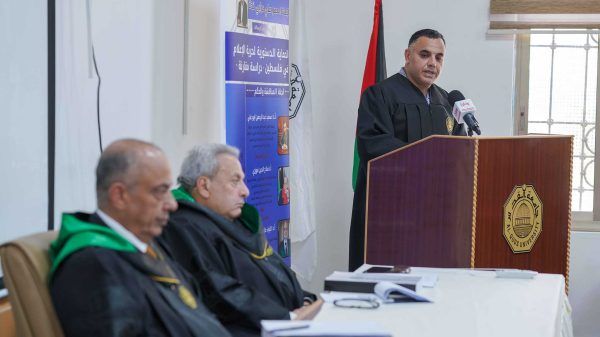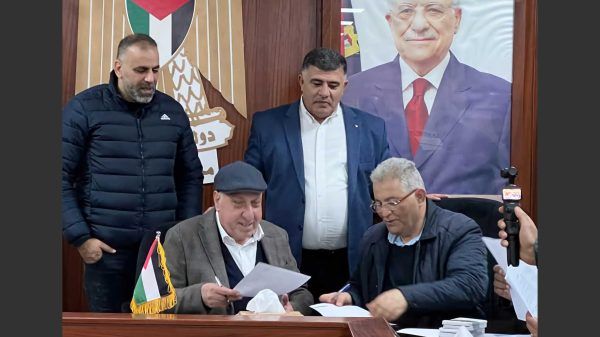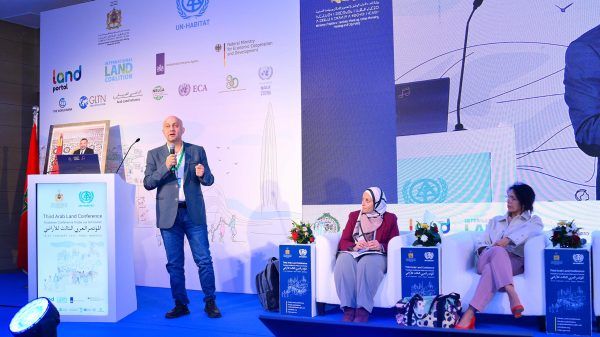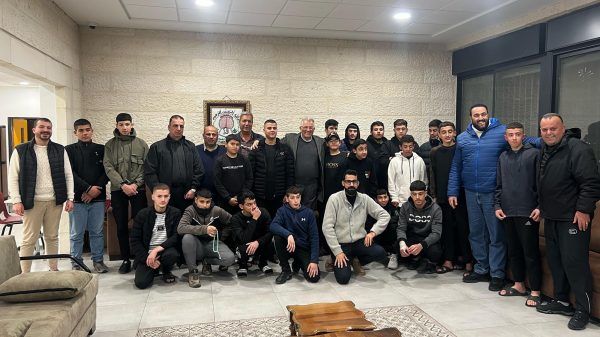نشر د. جهاد عبادي من دائرة العلوم الحياتية في كلية العلوم والتكنولوجيا ثلاث أوراق علمية في الفصل الأكاديمي الثاني 2012/2013 في مجلات علمية محكمة ومتخصصة “Journal of Agricultural Science and Technology, Journal of Environmental Science and Engineering “،حيث كان البحث الاول في مجال المعالجة المتقدمة للمياه العادمة، والثاني في فسيولوجيا تغذية النبات، والثالث في انتاج النبات.
تناول البحث الأول موضوع ازالة البكتيريا من المياه العادمة المعالجة معالجة ثانوية بواسطة تقنيات الفلترة المتقدمة والاسموزية العكسية دون استخدام الكلور لتجنب مخاطره الصحية والبيئية، حيث أجريت الدراسة في محطة تنقية المياه العادمة في جامعة القدس وبالاشتراك مع مجموعة من الباحثين في الجامعة من قسم الكيمياء وكلية الصيدلة ومركز التحاليل الكيميائية والحيوية، حيث خلص الباحثين الى ان التقنيات المستخدمة في محطة التنقية في الجامعة قادرة على ازالة اعداد كبيرة من البكتيريا "ملايين الخلايا في كل مللتر" التي تم اكثارها في المختبر وتمريرها في المحطة من اربعة أنواع مختلفة اعتمادا على تركيب جدارها الخلوي، واستنتج الباحثين وبناءا على تجارب عديدة ان كفاءة ازالة البكتيريا بواسطة تقنيات الفلترة تعتمد على نوع البكتيريا من حيث تركيب جدارها الخلوي ويمكن لهذه التقنيات انتاج مياه خالية تماما من البكتيريا بدون الحاجة الى الكلورة:
Jehad Abbadi, Rinad Saleh, Sameh Nusseibeh, Muhannad Qurie, Mustafa Khamis, Rafik Karaman, Laura Scrano and Sabino Aurelio Bufo (2012): Microbial removal from secondary treated wastewater using a hybrid system of ultrafiltration and reverse osmosis. Journal of Environmental Science and Engineering A 1 (7), 853-869
Abstract: The efficiency of advanced membranes towards removal of general and specific microbes from wastewater was investigated. The treatment included a subsequent system of activated sludge, ultrafiltration (hollow fibre membranes with 100 kDa cut-off, and spiral wound membranes with 20 kDa cut-off), and RO (reverse osmosis). The removal evaluation of screened microbes present in treated wastewater showed that hollow fibre membrane rejected only 1 log (90% rejection) of the TPC (total microbial count), TC (total coliforms), and FC (faecal coliforms). A higher effectiveness was observed with spiral wound, removing 2-3 logs (99%-99.9%) of TPC and complete rejection of TC and FC. The RO system was successful in total rejection of all received bacteria. The removal evaluation of inoculated specific types of bacteria showed that the hollow membranes removed 2 logs (99%) of inoculated E. coli (107-108 cfu/mL inoculum), 2-3 logs (99%-99.9%) of Enterococus spp. (107-1010 cfu/mL inoculum), 1-2 logs (90%-99%) of Salmonella (108-1010 cfu/mL inoculum) and 1-2 logs (90%-99%) of Shigella (105-106 cfu/mL inoculum). The spiral wound was significantly efficient in rejecting further 3 logs of E. coli, 5 logs of Enterococus spp., 4 logs of Salmonella, and a complete rejection of all received bacteria was accomplished by RO membrane. The results indicate that Gram positive bacteria were removed much more efficiently compared to the Gram negative ones, the rationale behind such behaviour is based on cell walls elasticity.
في البحث الثاني قام الباحث وبالاشتراك مع باحث ألماني من جامعة كيل بدراسة مقارنة لنوعين من النباتات المنتجة للزيت "العصفر وعباد الشمس" من حيث كفاءة استخدام الفسفور كعنصر غذائي، حيث تمت زراعة النباتات زراعة مائية وقام الباحث بمقارنة النوعين من النباتات بعدة معايير فسيولوجية لتقييم كفاءة الاستخدام لسماد الفسفور، استنتج الباحث بأنه وعلى عكس ما هو شائع في بعض المراجع فان نبات العصفر أقل كفاءة من دوار الشمس في امتصاص واستخدام الفسفور لانتاج الزيت:
Jehad Abbadi and Jóska Gerendás (2012): Phosphorous use efficiency of Safflower and Sunflower studied in nutrient solutions. Journal of Agricultural Science and Technology A 2 , 1260-1280
Abstract: Safflower represents an important oil crop internationally and may have a production potential under low input conditions, but its putatively high phosphorous use efficiency is not sustained. This study aims to directly compare safflower with sunflower in terms of phosphorus use efficiency in nutrient solution under controlled conditions. Growth of both species responded strongly to increasing P supply. Safflower recovers less proportion of added P than sunflower. External P requirement ((g P supply (100 g dry matter (DM) produced)-1) was higher in safflower than sunflower. The efficiency of the crops for DM production based on accumulated P (mg P pot-1, efficiency ratio), and P concentration in DM ((mg P (g DM)-1), utilization index) were interpreted using Michaelis-Menten kinetics as growth response curves. Accordingly, Km constant was lower in sunflower compared to safflower in terms of utilization index, but both were similar in terms of efficiency ratio. High Km constant in safflower in terms of utilization index indicates the high P concentration in tissues to produce 50% of potential maximum DM, consequently less efficient crop. Utilization efficiency contributed more than uptake efficiency in overall PUE in the efficient cultivar and could be the cause of its superiority in PUE. It can be concluded that safflower has a high requirement for P with respect to growth, sunflower is more efficient in terms of uptake and utilization of P at optimal and sub-optimal P supplies indicating that safflower cannot be considered a low nutrient input crop compared to sunflower with respect to phosphorus.
البحث الثالث كان تحت عنوان دراسة امكانية زراعة نبات العصفر في المناطق المناخية المعتدلة، حيث استندت الدراسة على قيام الباحث وبالاشتراك مع باحث ألماني من جامعة كيل بزراعة عشرة أصناف من نبات العصر زراعة حقلية وتم مقارنة انتاج الاصناف المختلفة ونوعية الزيت وكفاءة الاصناف المدروسة من حيث معايير الانتاج التي تؤثر على زيادة وثبات الانتاج والتي على اساسها يمكن اختيار بعض الاصناف القادرة على التأقلم مع البيئة الباردة والرطبة وعلى هذا الاساس يمكن ادخال هذا النوع من المحاصيل الى خارطة المحاصيل الزراعية في شمال المانيا:
Jehad Abbadi and Jóska Gerendás (2012): Potential for Safflower cultivation under temperate conditions. Journal of Agricultural Science and Technology A 2 (2012) 1307-1321
Abstract: Safflower is a Mediterranean-subtropical oil crop, may have certain production potential in organic farming in regions with temperate climate. To assess the suitability of safflower cultivation under temperate climate in low input organic farming, ten cultivars were grown in two years experiment in Lindhöft-Kiel in Northern Germany in clay/sand soil. Pearson correlations reveal that oil yield exhibited tight positive correlations with plant height, plant dry matter, capitula plant-1, achenes capitulum-1 and thousand achene mass (TAM), but was not correlated with days to full flowering or oil concentration. Yield component analysis reveals that achenes capitulum-1 had the major influence on the variation of oil yield of all studied cultivars, followed by capitula plant-1 and TAM, while the oil concentration had slightly negative influence, and the plant density was negatively associated with oil yield. Although two years field experiment is not enough to analyse the performance of safflower adaptability to certain region, it can be concluded that the most adaptive cultivars are PI-209286 originated from Romania, and cultivar CART-19/89 originated from Poland, while the less adaptive cultivars were DO-13/03 and DO-15/03 with German origin in addition to the Canadian cultivar PI-572475/Saffire. The most striking yield component that contributes to the high yield is achene capitulum-1, which can be used as a base for selecting cultivars adaptive to humid cold conditions. The growth period between full flowering and harvest influencing this yield component must be given attention to avoid low temperature and rainfall by tuning sowing date to improve yield at these conditions.







